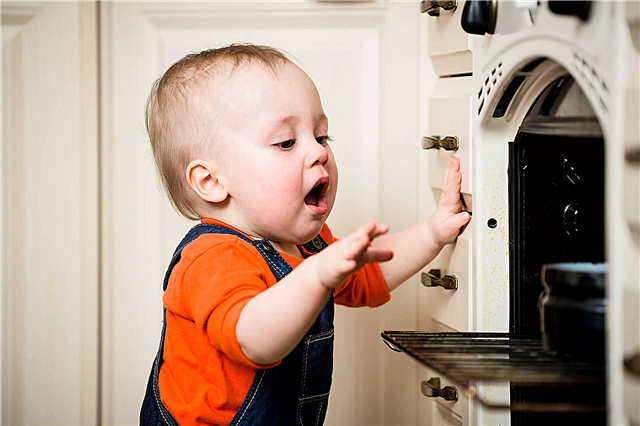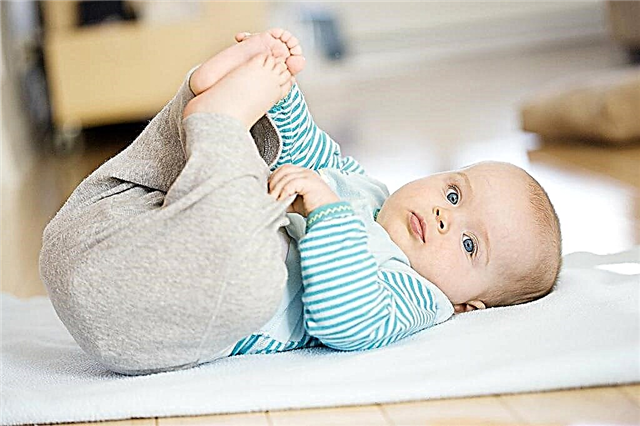
Sculptural plasticine is in great demand among professionals and amateurs. It is often used by sculpture students or art school students in their classroom. The plastic properties of this plasticine provide great opportunities for creativity and self-expression.
Children can discover a talent for sculpting and try their abilities by practicing with this plasticine, and adults are happy to improve their skills in creating sculpture. The material is irreplaceable in the process of education and training at the respective faculties.


What is different from the usual?
Sculptural plasticine differs from ordinary plasticine, first of all, in that its plastic properties are higher. The colors are similar to natural shades. You can, for example, mold a mask out of it, similar in color to the natural skin tone, or fruit and vegetable fruits. The result will look pretty realistic.
The sculptor's hands warm up the plasticine well, it becomes pliable, soft, which allows you to work out even the smallest details.
Sculptural plasticine is produced in briquettes: soft and harder.
Features:
The structure of sculptural plasticine is made up of beeswax, various fillers, which are usually sulfur, dry clay, talc. Plasticizers are added, and technical petroleum jelly or vegetable oil are used to give softness. This plasticine has natural natural colors, but it can be painted with any colors.
When choosing sculptural plasticine, you should pay attention to some of its properties:
- It must be elastic, pliable. It is necessary that softness and hardness are in the right ratio.
- When heated, it should become very plastic, practically melt.
- Should not leave smeared marks behind. Can be easily rolled out on a hard surface or in the hands.
- It is not difficult to wash away stains. You do not need to remove it with special means, enough water and soap.
- After the plasticine has been given the shape of a figure, it does not freeze, does not crumble, elasticity does not disappear.
Sculptural plasticine makes small-format models well: small busts, figurines, cartoon characters, animals, vegetables and fruits, etc.

To operate this plasticine, you will need special equipment: plastic boards, small cutting knives (stacks), various molds, metal wire for the frame (internal support is required). Copper will not work. Some substances in the composition of plasticine can destroy it.
Before you start working with this plasticine it must be heated with water or special appliances. You can heat the whole briquette and keep it hot and soft throughout the entire process, or you can heat it in small pieces that are needed for work at a given time (for one model, one piece was heated, for another, the next, etc.).


Overheated plasticine loses its plastic properties. If the same mass is heated several times, the components that impart softness and elasticity gradually evaporate. The mass becomes hard and brittle, and such plasticine is not suitable for work. However, you can restore the desired properties. For this, the material is remelted, and substances are added to the liquid mass to increase elasticity.
To make the model more realistic, you need to perform parts symmetrically... To do this, you need to find the axis of symmetry. You should also determine the center of the composition and take it as a basis. In a human figurine, for example, it will be a face. This part must be done as close as possible to the source.
Kinds
Sculptural plasticine is available in two types: soft and harder:
- The first one is suitable for beginner lovers of modeling. It can be used to model simple shapes. Sold in any store for children's creativity, respectively, can be used to develop fine motor skills of children. Its use will develop the child's creativity, stimulate imagination. You can first sculpt from pictures, photographs, then use models that you have invented yourself.
- The harder type of plasticine is more suitable for professional sculptures. From it, you can create miniatures, working models of the exterior of structures, medals, developments, samples of large final sculptures. It can act as a molding modeling compound for the manufacture of plaster elements for painting ceilings. Its structural composition allows you to work with small elements of the models.
An adult, who suddenly decided that modeling is the work of his whole life, can also try. It's never too late to get started, and different manufacturers will help.


Before starting work, plasticine of any type be sure to warm up. To do this, you can use warm water (the temperature is not higher than eighty degrees, otherwise the mass will lose its plastic properties) or a building hair dryer. A piece of the required size for making a figure is cut from the briquette in a stack (you should not cut off any more). Use a plastic board to work with.
You do not have to worry that a shapeless mass, if left untouched for a long time, will suddenly become a hardening paste. Under the influence of high temperature, the sculptural plasticine softens and becomes more elastic. To make it a little more pliable, the warmth of the master's hands will be enough.
Colors
The color palette of sculptural plasticine does not stand out for its variety. It is produced in briquettes of white, flesh, gray, olive, black colors:
- White color is suitable for making professional products. They will be similar in appearance to plaster. Can be used to create layouts and sketches. White is also good because the model can be painted in any suitable color. Therefore, you can safely make figurines from white sculptural plasticine, which should be multi-colored.
This is very good for children. First, the child will sculpt the model, then paint it in the desired color. Small motor function, imagination, intellect develop.


- Flesh is a natural color. Perfect for classic sculpting. Flesh-colored plasticine can be used to sculpt masks, busts, human figures.
- Gray, olive and black shades can also be used appropriately. Or paint the product in the desired color.
In any case, sculptural plasticine is most often used to create samples or as educational material. And the color is often not important, the shape of the product, small details are important.


How to do it yourself?
In order to make sculptural clay, you first need to melt the wax. Dry ground clay or sulfur is added to the wax, dry dye is also added here, and the whole mass is well mixed. Then all this is poured in a small layer onto a thick film. Time is given to cool down. The cold paste is ground, for example, in a meat grinder.
The resulting mixture is melted, technical petroleum jelly or oil is added to impart plasticity, talc or flour is mixed for hardness. Everything is carefully stirred, poured and cooled.

Such plasticine can also be made at home. There are several ways to do this:
- Take flour (two glasses) and Extra salt (three quarters of a glass). We connect, we interfere. Add food pigment. Next, add a glass of water to the dry mixture and stir until the salt is completely dissolved. Then add one tablespoon of starch and then a spoonful of PVA and vegetable oil. Mix the resulting mixture for about 20 minutes. It is better to place the finished plasticine in a package where gases, liquids, vapors will not penetrate and keep in the refrigerator. Please note that plasticine prepared according to this recipe is not stored for long, drying out after a few days.
- Boil half a glass of water... Add a glass of flour to the boiling liquid, stirring gradually. Add salt "Extra" (50 g), dye, add a spoonful of vegetable oil. Stir. Keep the mixture on low heat for 20 minutes until it thickens. More flour can be added if necessary. The finished product must be transferred to a small container and stored in a cool dry place. Don't be discouraged if you don't get the consistency you want right away. This is the order of the day for this cooking method.
Repeatedly using the same piece of such plasticine will not work. Only one model can be made.

- We take the same products as in the previous recipe. We fall asleep, pour them into a container suitable for a microwave oven, mix until a homogeneous mass is obtained. Close the top with a film or a lid and place in the microwave. We put on medium power, set the time to 5 minutes and turn it on. Next, take out the container and cool it. Stir the mixture until smooth. This plasticine also needs to be sealed. Store in the refrigerator for no longer than a month.
It should be noted that with your own preparation of the product, you will be sure of the naturalness, non-toxicity of the substances, you will be able to give the desired shade (pale or saturated) yourself. All ingredients are freely available and inexpensive.
Popular manufacturers
Russian manufacturers provide good quality and inexpensive material for the choice of buyers. Several of the most popular companies can be identified.
"Gamma"
This company produces both children's plasticine and plasticine for professional sculptors. The product is in demand among students of art schools and students of special faculties. It is great for teaching, prototyping, and reusable as it does not dry out or harden completely. Plasticine consists of a waxy mass, mineral pigments and various fillers. Does not contain sulfur. Soft, has high elasticity, in the hands of both a beginner and an experienced sculptor it takes any shape.


As a rule, this plasticine is well used for a clear study of shapes and lines, for the manufacture of small items, miniature compositions, and decorative items. Good because it does not smudge, leaving clothes clean, does not stick to hands and work equipment. The properties necessary for work do not change over time, therefore such material will serve for a very long time, perhaps several years.
Perfect for children, as does not contain harmful substances. Produced in briquettes weighing 1000 g. The company is improving the material, expanding the color palette, trying to provide the consumer with a wide range of species.

"Ray"
Another well-known manufacturer is Luch. The composition of the plasticine of this factory is the same as that of the Gamma company. The color spectrum is gray and flesh. The shelf life is also not limited, but it is more convenient to work with fresh material. Produced in bars of 300 g.

"Globe"
The company produces soft sculptural plasticine in gray, olive, flesh and terracotta colors. Bar weight - 500 g. Recommended age for work - from three years. It is resistant to temperature changes, keeps the shape of finished products well.

Reviews
Reviews of materials of different brands do not differ much. Basically, the opinions of buyers agree on the issue of plasticity and color.
Some buyers note that sculptural clay is simply necessary at the stage of teaching sculpture. It is great for making trial products, mockups, samples. But ready-made figures are short-lived. Dust will settle on the surface of the sculpture, and it itself may deform over time.
Other buyers note the firmness and stability of their products. This fact largely depends on the mark on the packaging with the material: M - soft, TM - hard-soft, T - hard.


Beginners are advised to use plasticine with M and TM marks. It is more malleable and easier to handle.
All reviews point to the hardness of the plasticine before starting work. He practically does not wrinkle. But as soon as it is heated, the process goes like clockwork: kneading easily, effortlessly, it is pleasant to work.
Everyone notes the poverty of the color scheme. The colors of the buyers are not happy, some reviews even say that bodily plasticine is not at all similar to bodily. It is good that the material can be painted in the desired color.


Consumers also talk about shelf life. The packaging indicates that it is not limited. But buyers recommend using fresh material as it is more malleable and malleable. Old plasticine, for example, one year ago, will have to be heated for a long time to work. But the qualities, in general, are preserved.
The price is acceptable for everyone, not high. The availability of the material is noted, you can purchase it both in a stationery store and order online. In general, the reviews about sculptural plasticine are positive. All that he is capable of, the wave satisfies the buyers.
In the next video, you will find a lesson on molding plasticine sculpture.



